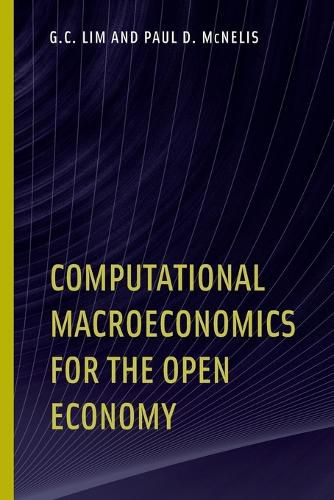Readings Newsletter
Become a Readings Member to make your shopping experience even easier.
Sign in or sign up for free!
You’re not far away from qualifying for FREE standard shipping within Australia
You’ve qualified for FREE standard shipping within Australia
The cart is loading…






How to use nonlinear dynamic models in policy analysis.
How to use nonlinear dynamic models in policy analysis.
Policymakers need quantitative as well as qualitative answers to pressing policy questions. Because of advances in computational methods, quantitative estimates are now derived from coherent nonlinear dynamic macroeconomic models embodying measures of risk and calibrated to capture specific characteristics of real-world situations. This text shows how such models can be made accessible and operational for confronting policy issues. The book starts with a simple setting based on market-clearing price flexibility. It gradually incorporates departures from the simple competitive framework in the form of price and wage stickiness, taxes, rigidities in investment, financial frictions, and habit persistence in consumption. Most chapters end with computational exercises; the Matlab code for the base model can be found in the appendix. As the models evolve, readers are encouraged to modify the codes from the first simple model to more complex extensions. Computational Macroeconomics for the Open Economy can be used by graduate students in economics and finance as well as policy-oriented researchers.
$9.00 standard shipping within Australia
FREE standard shipping within Australia for orders over $100.00
Express & International shipping calculated at checkout
How to use nonlinear dynamic models in policy analysis.
How to use nonlinear dynamic models in policy analysis.
Policymakers need quantitative as well as qualitative answers to pressing policy questions. Because of advances in computational methods, quantitative estimates are now derived from coherent nonlinear dynamic macroeconomic models embodying measures of risk and calibrated to capture specific characteristics of real-world situations. This text shows how such models can be made accessible and operational for confronting policy issues. The book starts with a simple setting based on market-clearing price flexibility. It gradually incorporates departures from the simple competitive framework in the form of price and wage stickiness, taxes, rigidities in investment, financial frictions, and habit persistence in consumption. Most chapters end with computational exercises; the Matlab code for the base model can be found in the appendix. As the models evolve, readers are encouraged to modify the codes from the first simple model to more complex extensions. Computational Macroeconomics for the Open Economy can be used by graduate students in economics and finance as well as policy-oriented researchers.